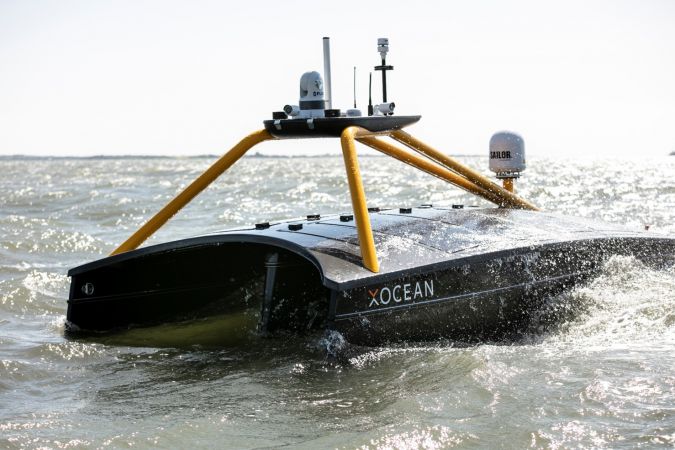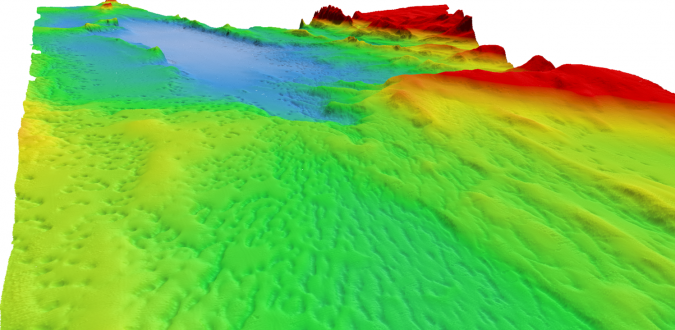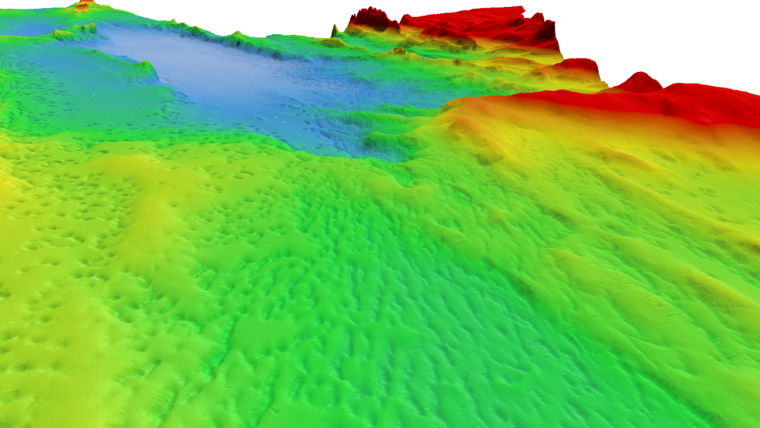Remote-controlled USV Survey of Lake Superior Seabed
In a substantial move forward for the Canadian marine industry, two XOCEAN Uncrewed Surface Vessels (USVs), remotely controlled via satellite, took to Lake Superior this winter to conduct pioneering survey work for the Canadian Hydrographic Service (CHS) in partnership with IIC Technologies.
The project marks the first time that USV technology has been used to gather bathymetry data in inland waters in Canada.
CHS contracted IIC Technologies to acquire a high-resolution seabed survey in water depths up to 200m, of over 800km2 off Thunder Bay, Ontario, using USV technology. IIC partnered with XOCEAN, who provided and remotely operated their XO-450 USVs from XOCEAN’s Control Centres in the UK and Ireland, while IIC provided the party chief, shore-based data processing and logistical support.
The uncrewed vessels are around the size of an average car (4.5 metres) and half the weight (750kg) and are remotely monitored and controlled 24/7 via a satellite connection by a team that can be located anywhere in the world. XOCEAN’s USVs offer significant benefits, including increased safety with operators remaining onshore, survey efficiency due to multiple-day mission 24/7 operations, drastically reduced local resourcing requirements and carbon-neutral operations which together lead to significant economic savings.

Remote Monitoring and Real-time Data Access
Throughout the mission, a team combining IIC Technologies hydrographers and data processors and XOCEAN USV pilots and surveyors remotely monitored the USVs to ensure safe operation of the vessels and quality of data acquisition. The success of this project demonstrates the highly flexible and collaborative nature of this new technology, enabling industry experts to have direct access to real-time data, from any location. Given ongoing Covid-19 restrictions, XOCEAN continues to prove the resiliency of its operations by partnering with experts, such as IIC Technologies, who also performed an active support role on-site with the USVs while in Thunder Bay.
Dave Bazowsky, engineering project supervisor, said: “CHS wanted to evaluate the operational readiness of a commercial off-the-shelf autonomous technology in a real working environment. The area chosen in northern Lake Superior lies within a Secondary Low Impact Shipping Corridor and the world’s largest freshwater National Marine Conservation Area. It was also selected to simulate an analogous working environment one may expect in the Canadian Arctic. The IHO S-44 Order 1A data collected in this area will be used to update navigational publications used to facilitate safe and efficient navigation and will also contribute to the blue economy in general.”
Challenging Late Fall Conditions
John Conyon, director of hydrographic operations, said: “The cooperation and flexibility shown by XOCEAN and CHS were key to successfully performing this project in very challenging late fall conditions in northern Lake Superior. The XOCEAN USV’s performed well through storms and sea ice, providing a stable platform that enabled the acquisition of high-quality bathymetric data that meets CHS stringent requirements”.
Commenting on the project, James Ives, CEO of XOCEAN said: “Our USV platform has demonstrated itself to be a safe, reliable and carbon-neutral solution for the collection of ocean data. We are delighted to be working with IIC Technologies on this ground-breaking project delivering data for the Canadian Hydrographic Service.”















